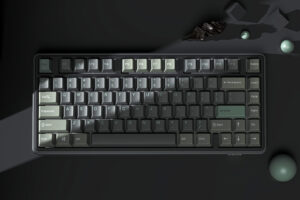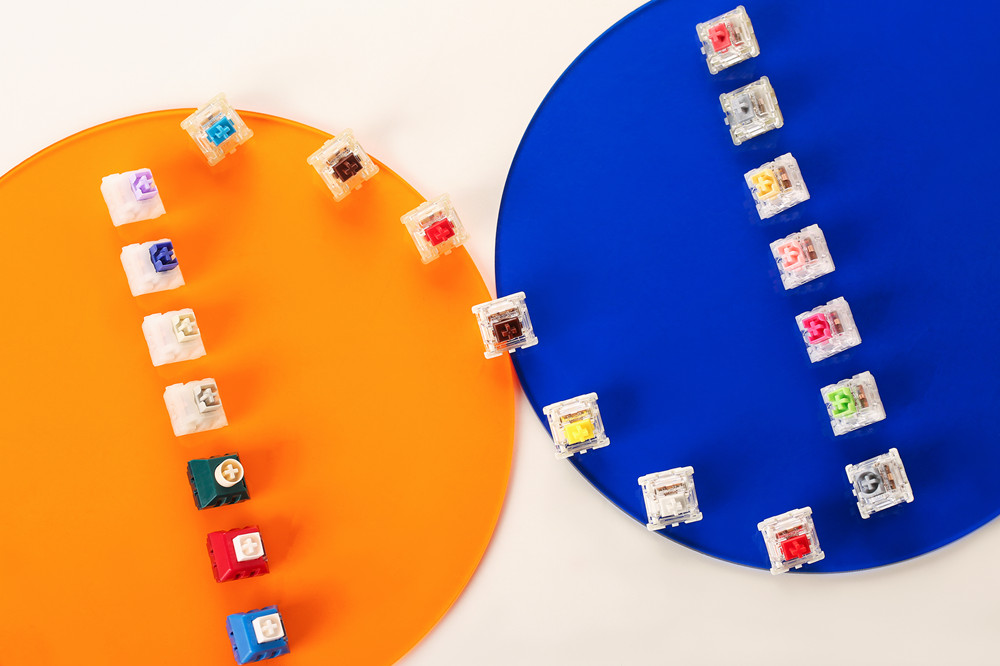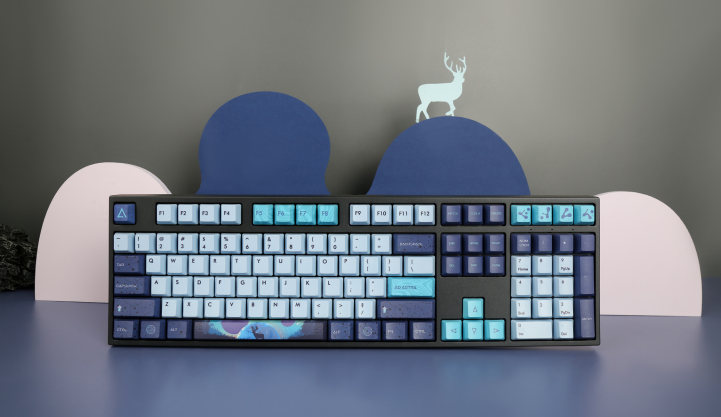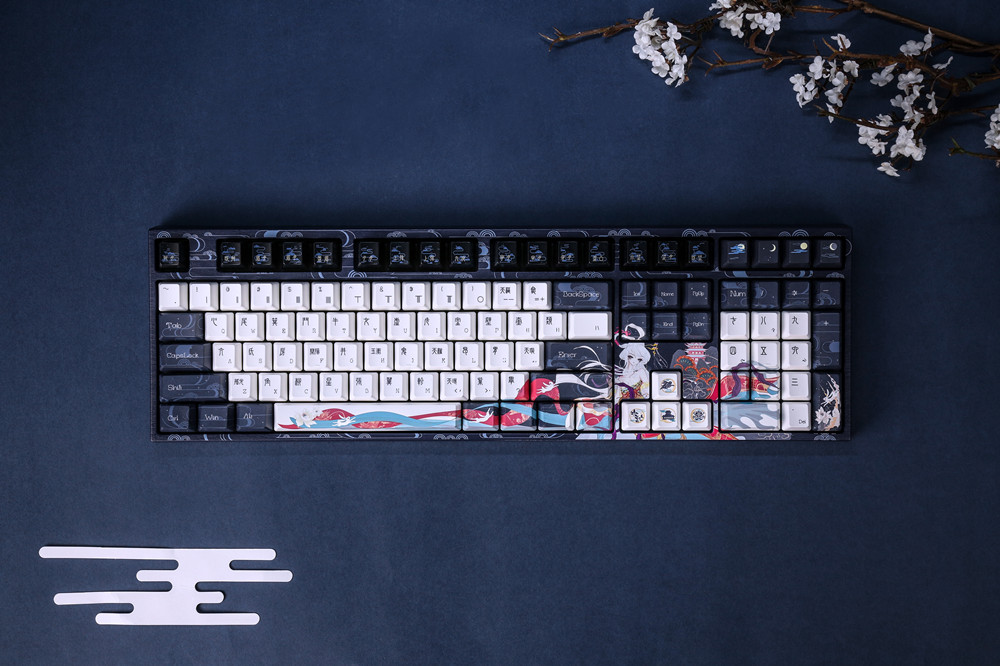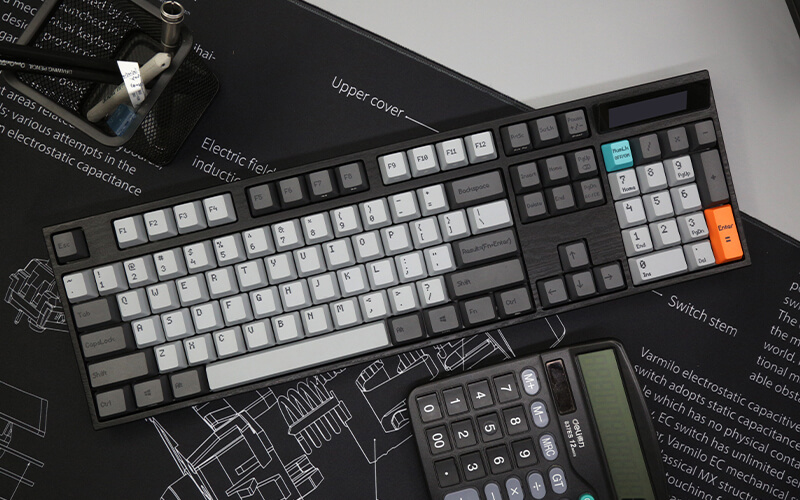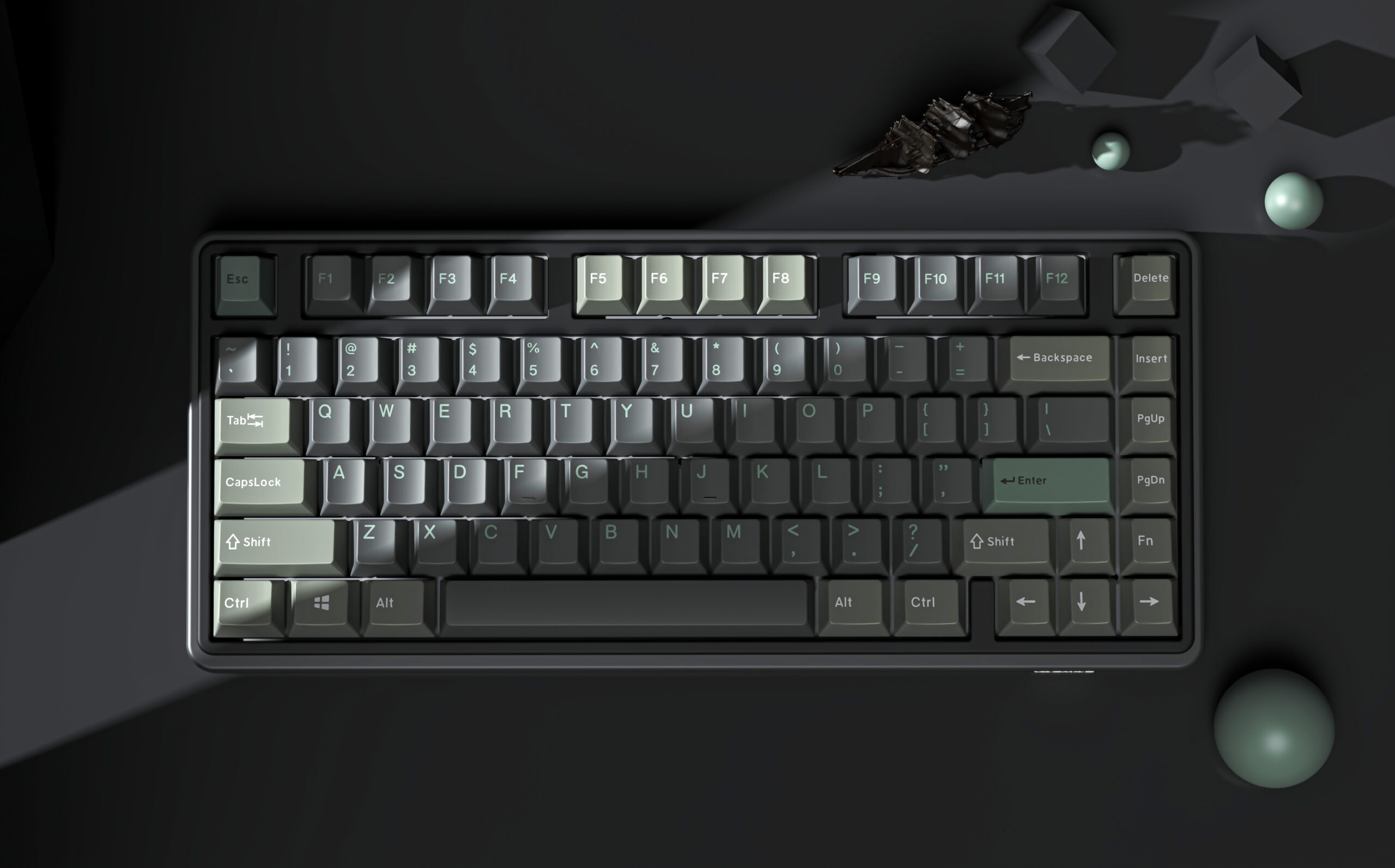With all the various mechanical keyboard types, it’s hard to find keycaps that match your keyboard. Some keyboards have smaller alt buttons, special right-shift keys, odd spacebars, unique enter keys, and broken backspace. There are infinite options. When you’re searching for keycaps that suit your mechanical keyboard, it’s important to know what to look for. You need to verify whether a keyboard package matches your mechanical keyboard by checking the configuration of your keyboard, understanding the size of special keys such as space, move, backspace, enter, and the bottom row keys such as Ctrl, Alt, Win, and Fn. Some keyboards require additional keys or smaller keys than the standard layout.
However, we are going to be talking about keycaps fundamentals. At the end of the post, you will be able to learn how to identify the suitable keycap for your keyboard.
The factors to consider when finding suitable keycaps for your keyboard
- 1. How the keycaps are measured: The Unit System
It’s necessary to clarify how keycaps are calculated before we start diving into the various leveled details. When comparing to keycap sizes, 1u is the size of an alphanumeric key. 2u is twice the size of 1u, and will be two regular keys smushed together. Measurements get a little bit more confusing as they get larger, such as 6.25u: which means the keycaps are the same length as 6 standard keys, plus an extra quarter of a key.
- 2. Standard Layout
To see if a new set of keycaps suits your keyboard, you need to see if your keyboard is in the regular style, otherwise you might run into any problems. If people refer to a standard layout, they say the key sizes of a full-size, tenkeyless, or 60 percent mechanical keyboard. Looking at this infographic in our Keyboard Size Guide, you can see how consistent key sizes are for 60 percent, full-size, and ten-key-free layouts.
When testing if your keyboard is a standard layout, you primarily need to look at the sizes of the bottom row keys. The bottom row keys are usually 1.25u for the regular style, and the spacebar is typically 6.25u. Until buying a keycap package, double-check the keycap size.
The lower row is referred to as the “non-standard” by companies such as Razer, Logitech, and Corsair, which means it does not match the sizes above and requires specific style keys. Keyboard. University has a very simple keycap rule to use, which can also be printed and the keycaps balanced to show how big.
For instance, Razer Huntsman TE, Ducky One 2 Mini, Anne Pro 2, Durgod Taurus K320 TKL, HyperX Alloy Origins Heart, Keychron K8, Remove Snowfox/Shadow, Drop CTRL and many more mechanical keyboards with a regular layout.
- 3. Switches and Stem / Mount Compatibility
Almost any new keycap series is equipped for swapping stems Cherry MX; this is a common industry used by many manufacturers (like Kailh and Gateron). Non-standard stem adapters like the Alps are available in the population intermittently. The Kailh Choc low profile switches would not accept regular MX stem keycaps. However, you can remove a keycap to check for their characteristic and shape.
- 4. Keycap Coverage and Rows
As soon as you have your shopping layout and compatibility! Navigate to a product page with keycap and see the images of your branded kit. Most of the images will be generated by the computer. This is a requirement for sales of keycap groups as the caps do have to be made. The most popular keycap plastics are PBT and ABS. In PBT, sun exposure and fingertip wear ‘glow’ are best avoided. Traditional ABS, simpler to inject and readily available (Doubleshot)
Most of the basic kits contain a standard keyboard, but with certain keysets, one TKL package plus a numerical keyboard kit. Standard keyboards seldom encounter problems in coverage. Sub-TKL keys are another matter.
You then need to make absolutely sure that each row of keys has the same angle/form after you have accounted for keycap coverage. This may not be a concern when you buy a uniform profile (DSA, SA R3, XDA) in which all keys are of the same angle. Perfectly shaped profiles such as SA and Cherry have a minor tilt on each horizontal row of keys to maximize comfort, thereby preventing you from mixing as freely between key locations. Once you compare the keycap sets and the kit suit, it’s time for due diligence.

Keyboard keycap materials
One of the most appealing aspects of the hobby is the freedom to modify the look and sound of a mechanical keyboard. For most hobbyists, a keyboard personalization begins and finishes with the most plentiful keycaps.
You probably saw keycaps in varying sizes, shapes and colors. Some may also be translucent or lacquered, holding an inside figure. While for some mechanical keyboard enthusiasts style and function are significant, it is important to know what material the keycaps are made of.
The vast majority of primary caps are made from plastic. However, you might have seen materials used like bamboo, silicon, and even copper. Although, there are three major forms of plastic that are used to make keycaps but in this post, we will be focusing on two, which is: ABS and PBT keycap plastic
- 1. ABS (Acrylonitrile Butadiene Styrene).
ABS is a thermoplastic, and is easy to format a certain temperature and solidifies when cooled. This makes it the right folding medium for injection molding, the primary method for shaping keycaps.
ABS is lightweight, durable, impact-resistant and, most importantly, low-cost. These elements make it the main commodity used for the mass manufacturing of consumer products, including mechanical keyboards.
Manufacturers tend to use ABS for dual-shot moulding, which is the method of forming a main cap around a metal or plastic insert. This polymer is chosen because it is not as vulnerable to shrinkage as other plastics might be. That’s why you could see a keyboard made up of PBT keycaps with an ABS space bar, bigger keys are just too problematic to render with other materials. ABS keycaps are much smoother than PBT or POM keycaps. As an example, LEGO is constructed of the same material; it is very durable and smooth plastic.
However, there are very few downsides to ABS plastic keycaps, and overtime the keys will tend to become shiny due to wear and tear. This substance is also prone to sunlight damage, with lighter colored overtime keys beginning to turn yellow.
- 2. PBT (Polybutylene Terephthalate).
One of the toughest and most robust keycap materials, PBT is becoming a high-quality mechanical keyboard material. In comparison to ABS rubber, PBT is more resistant to heat and chemicals. This means that it’s not going to be the same yellowing problem as ABS keyboards, but it makes moulding keycaps a little trickier.
The texture of the PBT keycaps is slightly grainy or sandy relative to the smooth ABS keycaps. Over time, this texture isn’t going to wear off, since it’s a plastic property. It is possible to find PBT keycap sets that have a smooth texture, but the vast majority of sets are very grainy. Since PBT doesn’t wear off, it won’t be vulnerable to the “shine” that ABS keycaps have over extensive use.
There are some apparent pitfalls in the use of PBT plastic for keycaps, the main one being an expense. PBT is much more costly than ABS rubber, which is why we only see it used on high-end mechanical keyboards. In comparison, PBT plastic is more difficult to shape than ABS. It is vulnerable to shrinking and warping, making it impossible to work with the material. This makes the dual-shot molding process especially tricky and laborious, pushing up costs as a result.
The high melting point of PBT plastic has some positive benefits. Many ABS keycaps have their legends laser-engraved, typed or laser-engraved.
- The Overall differences between ABS and PBT
The most talked-about differences are the type of plastic; ABS and PBT. In general, PBT is seen as superior to ABS keycaps, because it is stiffer, more robust (don’t strike it with a hammer), remains accurate in color and doesn’t produce a shine effect over time. Take a look at your keyboard; you’re more likely to see those shiny buttons.
You can also note while typing that the sound between ABS and PBT is substantially different. PBT is going to sound a little more “thumpy” or lower tone and ABS is going to sound a bit more “clicky” or higher tone.

The Processes applied in producing keycaps
We may assume that most main caps are made by either ABS or PBT, but the production process is just as critical as the plastic form. A keycap is mostly made by a single or double injection molding operation. The above is only used with the so-called “double-shot” keycaps.
Double shot keycaps are composed of 2 layers of plastic, most commonly ABS. The first layer is normally molded for the legend (the keycap graphic), followed by the second injection of the keycap hull, hence “double-shot”. Double-shot is a costly process that requires a different mould for each colour with a minimum of two. As a result, single mold injected keycaps are more popular. Just a single injection mold creates a naturally blank keycap and involves another (different) step for the legends. The most common approaches are the following:
- Pad printing
- Sublimated dying
- Laser printing
- Laser etching
For each printing process, the consistency depends very much on the maker, but can never last longer than double-shot keycaps.
- 1. Pad printing
It is by far the most common process for virtually any inexpensive keyboard. There are various types of pad printing, but essentially, it simply prints the legends on the keycaps.
- 2 Sublimated dying
This infuses the ink with plastic by a heat pressing operation. It is better used for PBT to keep plastic from being worn very easily, since the ink sinks in a very shallow form. It’s quite close to how those adorable personalized family photo mugs are made.
- 3. Laser printing
This is a very common process after pad printing, especially with the growing demand for backlit keycaps. There are three different methods of laser printing.
- 4. Laser etching
Laser etching essentially burns into acrylic, leaving a black carbon legend on the keycap. It is commonly used for comparison on white keycaps. Laser etching with paint filling is the same as laser etching, except the engravings are then filled with colored paint. It’s also good for black keycaps.

Keycap height profiles
When selecting the right keycap set, the keycap profile you plan to use is a significant customization choice to remember. However, Keycap height profiles mainly include SA, OEM and Cherry heights. The keycap profile describes the structure of the keycaps on the keyboard row in question. Ergonomics and aesthetics are the main ideas behind the “sculpted” keycap sets.
However, as with all aspects of personalizing your mechanical keyboard, the “best” keycap profile for you is variable and relies on your personal choice.
The Varmilo mechanical keyboard keycaps
The consistency of the keycap depends on a variety of variables. These include the material, the thickness of the keycap, and the method of printing. As one would imagine, a thicker keycap would last longer than a paper-thin keycap. Even, the keycap must not be too heavy to have an effect on the sensation. Different keycap fabrics last but not least, it is best to buy a robust model like that of varmilo.
How is the quality and feel of Varmilo Keycaps?
However, If you’re thinking about getting a new set of keycaps, then we highly recommend Varmilo keycaps. Varmilo is a brand of peripherals operated by Shenzhen Zhihaihe Technology Co., Ltd. Varmilo has a plethora of keycaps that suits perfectly with your keyboard. They’ve got keycaps with different configurations and different switches.
Varmilo makes their keycaps of high-quality PBT material, making them super durable. They also manufacture theme-based mechanical keyboards. Beautiful Varmilo keycaps will bring more elegance to your office. Colorful patterns are printed using a dye-sublimation process; the colors will last longer and will not disappear. These keycaps are dense and can last longer than the conventional keycaps.
